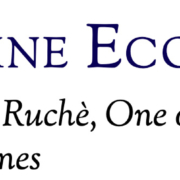NYMPHAE Monferrato Bianco DOC, tra tradizione ed innovazione
Se venite a visitare Tenuta Montemagno, la prima cosa che noterete è la cornice perfetta di filari geometricamente allineati intorno alla Tenuta – l’edificio del XVI secolo e alla cantina. Le vigne di Sauvignon e Timorasso, rispettivamente sul lato sinistro e destro del viale che si percorre per arrivare in Tenuta, regalano uno spettacolo incredibile.
Immaginate di fermarvi esattamente in questo punto.
Provate a focalizzare mentalmente le caratteristiche sensoriali del Timorasso: notevole struttura, mineralità, e sapidità; poi, fate lo stesso con il Sauvignon: spiccata aromaticità, profumi e sentori floreali.
Unite queste caratteristiche e darete vita ad uno dei nostri bianchi più apprezzati: Nymphae, un blend composto da 60% Sauvignon e 40% Timorasso.
La combinazione di queste due varietà, l’internazionale Sauvignon e l’autoctono Timorasso, da’ vita ad un blend dal corpo deciso e ben marcato, una buona mineralità e dei profumi delicati e morbidi. Un’idea innovativa del fondatore di Tenuta Montemagno Tiziano Barea, supportata e avvalorata dalla lunga esperienza dell’enologo Gianfranco Cordero.
Dal punto di vista organolettico, il Nymphae al colore si presenta giallo paglierino scarico con lievi sfumature verdoline. Il bouquet ha note di pera, foglia di pomodoro, fiori di acacia e biancospino. Al palato è al contempo morbido e deciso, di buona persistenza e struttura grazie all’affinamento sui lieviti di circa quattro mesi. L’aspetto piu’ sorprendente del Nymphae è la combinazione perfetta delle peculiarità dei due vitigni, che si intrecciano e completano. È un vino innovativo, tradizionale e internazionale.
Gli ettari vitati di proprietà di Tenuta Montemagno sono 20 e tutti esposti a sud- sud ovest, versanti ottimali per terroir e esposizione.
Più precisamente, troviamo il Timorasso sulla fascia frontale ai piedi della struttura principale con un’esposizione rivolta quasi totalmente a sud e con un terreno prevalentemente argilloso-calcareo dotato di leggera ritenzione idrica data dall’argilla. Il Sauvignon invece, cresce su un terreno argilloso-calcareo e l’esposizione è totalmente rivolta verso ovest.
L’impronta qualitativa dei vini di Tenuta Montemagno, vinificazione con sistemi altamente tecnologici, bassissimo contenuto di solfiti e totale assenza di ossigeno in bottiglia, è chiara: i profumi, la persistenza, la piacevolezza e la mineralità del Nymphae, sono definiti e ampi.
Come tutti i vini di Tenuta Montemagno, anche questo Monferrato Bianco ha un nome di origine latina: Nymphae, ispirandosi alle divinità che dominavano i boschi e le acque nella mitologia greca.
Nymphae è inaspettato, unico e versatile. Ottimo aperitivo, si accompagna splendidamente anche ad antipasti, carne cruda, primi leggeri e risotti, piatti di pesce e carni bianche, grazie alle caratteristiche sensoriali proprie dei due vitigni.
Lo si abbina volentieri alla Battuta di Fassona piemontese lavorata a coltello: piatto preparato dall’Executive Chef Giampiero Vento nel ristorante della Tenuta, La Civetta sul Comò.
Se vuoi degustare il nostro Nymphae Monferrato Bianco DOC lo puoi trovare sul nostro shop online.



